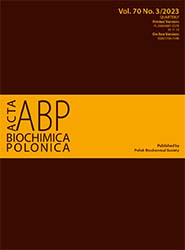Osteosarcoma’s genetic landscape painted by genes’ mutations
Abstract
Purpose: Osteosarcoma (OS) is one of the most common primary bone tumors. Direct pathogenesis remains unknown, however, genes’ mutations are proven to participate in the process. This study aimed to examine the most frequently mutated genes in OS to appoint candidates for the cancer markers. Methods: Using the COSMIC Catalogue twenty the most frequently mutated genes were selected leading to an up-to-date genetic OS landscape summary. The genes can be classified into four categories: suppressor genes (TP53, RB1, NCOR1, SMAD2, NF1, TSC2, KMT2C), proto-oncogenes (GNAS, BRAF, MLLT3), epigenetic and post-translational modification-related genes (SMARCA4, ARID1A, ATRX, BCOR, H3F3A) and cell growth and survival regulating genes (EGFR, CAMTA1, LRP1B, PDE4DIP, MED12). Results and conclusions: Their role in cancerogenesis was confirmed by the analysis of available articles published previously. The results of the study indicate that examination of selected genes’ mutations might help to identify patients’ predisposition to OS development, as well as monitor the disease progression, and establish prognosis. However, to fully understand the pathogenesis of OS further studies are required.
Copyright (c) 2023 Wiktoria Urban, Dagmara Krzystańska, Michał Piekarz, Jerzy Nazar, Anna Jankowska

This work is licensed under a Creative Commons Attribution 4.0 International License.
Acta Biochimica Polonica is an OpenAccess quarterly and publishes four issues a year. All contents are distributed under the Creative Commons Attribution-ShareAlike 4.0 International (CC BY 4.0) license. Everybody may use the content following terms: Attribution — You must give appropriate credit, provide a link to the license, and indicate if changes were made. You may do so in any reasonable manner, but not in any way that suggests the licensor endorses you or your use.
Copyright for all published papers © stays with the authors.
Copyright for the journal: © Polish Biochemical Society.


